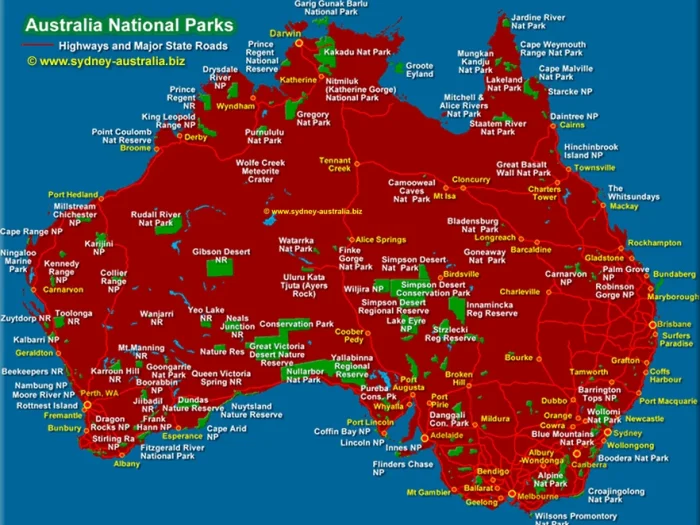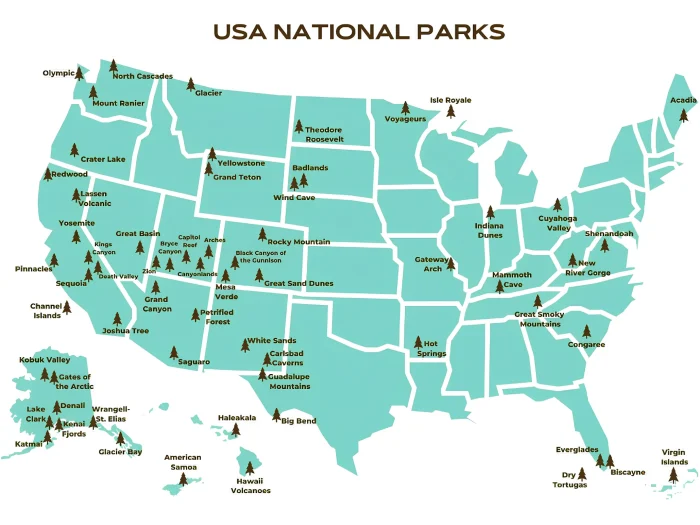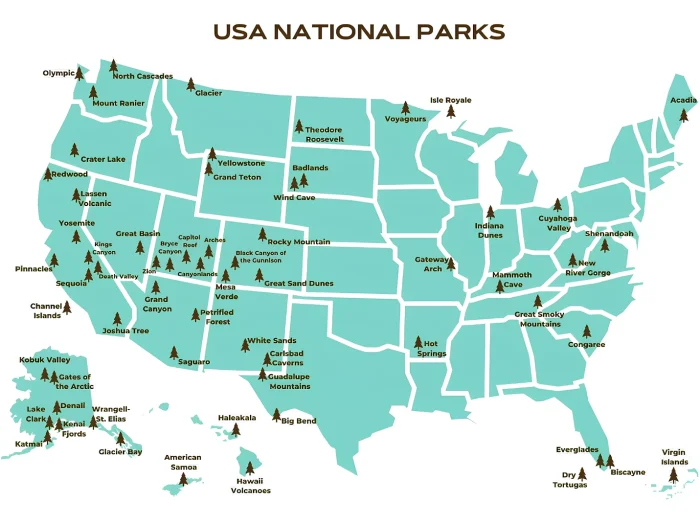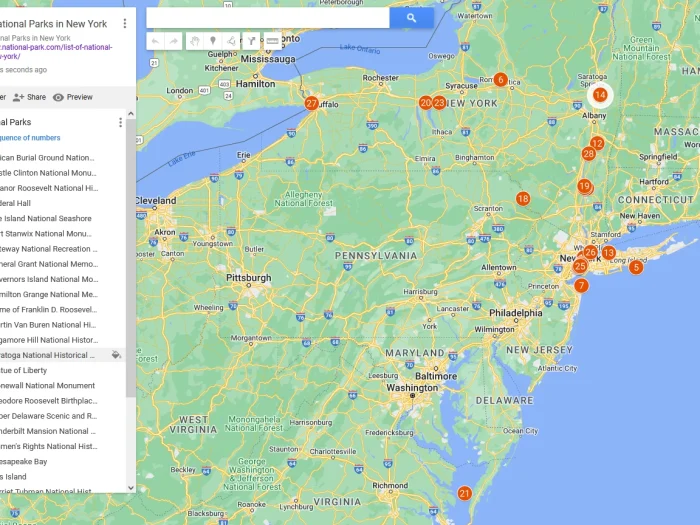Leveraging Cryptocurrency: How National Parks are Raising Funds
National parks represent some of Earth’s most breathtaking and ecologically significant landscapes.
From the towering peaks of Yosemite to the bioluminescent waters of Halong Bay, these protected areas offer unparalleled opportunities for exploration, recreation, and scientific discovery. However, ensuring the long-term health and accessibility of these parks requires substantial funding.
Traditionally, national parks have relied on government appropriations, park entrance fees, and donations from philanthropic organizations. However, in recent years, a new fundraising tool has emerged: cryptocurrency.
Cryptocurrency, a digital asset secured by cryptography, has exploded in popularity in the last decade. This led to some national parks beginning to explore its potential as a way to raise critical funds.
This article will delve into the growing trend of national parks leveraging cryptocurrency to fund their operations. We will explore the various ways parks are utilizing crypto, the potential benefits and drawbacks of this approach, and the future outlook for crypto fundraising in the realm of national parks.

Image: getfullyfunded.com
Efficiency and Cost Savings
Traditional donation methods can involve processing fees and administrative overhead. Crypto transactions, on the other hand, can be faster and more efficient, potentially reducing administrative costs for national parks.
Supporting National Parks with Crypto: A Stable Way to Give
Donating to national parks with digital currency is easier for crypto enthusiasts than ever. Here’s how:
1. Choose a Stablecoin: Volatility can be a concern. Consider using a stablecoin, a cryptocurrency pegged to a stable asset like the US dollar. Tether (USDT) is a popular option.
2. Secure Your Funds: Register and verify on a reputable cryptocurrency exchange like CEX.IO. This is a fast and secure way to purchase USDT with traditional currency.
3. Donate to Your Favorite Park: Many national parks now accept cryptocurrency donations. Find their donation page and follow the instructions for crypto contributions. They’ll likely provide a wallet address for your USDT donation.
By using a stablecoin, you can leverage the ease and reach of cryptocurrency while mitigating the risk of market fluctuations. This allows you to make a real difference for the parks you cherish.
Why National Parks Need Additional Funding
National parks face a multitude of financial challenges. Visitation rates are steadily rising, placing a strain on park infrastructure and staff resources. At the same time, government allocations for park maintenance and conservation efforts often fall short.
A 2022 National Parks Conservation Association report found that the National Park Service has a maintenance backlog exceeding $21.9 billion. This backlog includes critical repairs to roads, trails, visitor centers, and historic structures.
Insufficient funding also hinders park efforts in areas like wildlife conservation, habitat restoration, and educational programs. These challenges threaten the very essence of national parks – the preservation of natural beauty and the provision of enriching experiences for visitors.
How National Parks Are Using Cryptocurrency
National parks around the world are starting to experiment with cryptocurrency fundraising in a variety of ways. Here are some of the most common approaches:
- Direct Donations: A growing number of national parks accept direct cryptocurrency donations. This allows crypto enthusiasts to support the parks directly using their digital assets. For example, The National Park Foundation, which supports Kenya’s national parks, began accepting Bitcoin donations in 2018.
- Conservation Tokens: Some parks are exploring the creation of their own cryptocurrency tokens, often called conservation tokens. Donors can purchase these tokens and potentially offer holders various benefits, such as voting rights on park management decisions or exclusive access to park experiences. While still in the early stages of development, conservation tokens hold promise for fostering a new kind of engaged park supporter.
- Charity Auctions: A handful of parks have utilized cryptocurrency auctions to sell unique experiences or memorabilia. In 2020, Estonia’s Matsalu National Park auctioned off the naming rights to a newly discovered bat species for cryptocurrency. The winning bid helped fund bat conservation research in the park.
- Partnerships with Crypto Organizations: Several national parks are partnering with cryptocurrency organizations to leverage their expertise and donor networks. These partnerships can help raise awareness of park fundraising efforts within the crypto community.
Potential Benefits of Cryptocurrency Fundraising for National Parks
Cryptocurrency fundraising offers several potential benefits for national parks:
- Reaching New Donors: The popularity of cryptocurrency has attracted a new generation of investors. By accepting crypto donations, parks can tap into this growing donor base and expand their fundraising reach.
- Increased Efficiency: Crypto transactions can be faster and more efficient than traditional donation methods. This can reduce parks’ administrative costs and ensure donations reach their destination quickly.
- Global Donations: Cryptocurrency’s borderless nature makes it easier for international donors to support national parks, opening up new fundraising possibilities for parks around the world.
- Potential for Innovation: Blockchain technology, the underlying technology behind cryptocurrency, is decentralized and programmable, which could lead to innovative new fundraising models for parks in the future. For example, blockchain could be used to track donations and ensure transparency in how funds are used.
Challenges and Considerations
Despite the potential benefits, there are also challenges and considerations associated with cryptocurrency fundraising for national parks:
- Volatility: The value of cryptocurrency can fluctuate significantly. This volatility could make it difficult for parks to budget and plan for crypto donations.
- Regulation: The regulatory landscape surrounding cryptocurrency is still evolving. This uncertainty could pose challenges for parks accepting crypto donations and ensuring compliance with relevant regulations.
- Technical Expertise: Managing cryptocurrency donations requires a certain level of technical expertise. Smaller parks may struggle to acquire the necessary knowledge and resources.
- Environmental Impact: Some cryptocurrency mining operations consume large amounts of energy, raising concerns about their environmental impact. National parks dedicated to conservation need to carefully consider the ecological implications of accepting crypto donations mined using unsustainable practices.
Building a Sustainable Model
Despite these challenges, national parks can navigate them by building a sustainable and responsible model for cryptocurrency fundraising. Some key strategies include:
- Partnering with Green Crypto Initiatives: Several organizations are promoting the use of renewable energy sources for cryptocurrency mining. Parks can partner with these groups to ensure their crypto donations come from a sustainable source.
- Transparency and Education: Parks should be transparent about how they utilize crypto donations and educate donors about the potential environmental impact of different cryptocurrencies.
- Focus on Established Cryptocurrencies: Initially, parks might focus on accepting established cryptocurrencies with lower environmental footprints, such as Bitcoin Cash or certain proof-of-stake coins.
The Future of Crypto Fundraising for National Parks
The use of cryptocurrency for national park fundraising is still in its nascent stages. However, it holds significant promise for attracting new donors, increasing efficiency, and fostering innovation in park conservation efforts.
As the cryptocurrency market matures and regulatory frameworks become clearer, crypto fundraising is likely to become a more prominent tool for national parks around the world.
Here are some potential future trends to watch:
- Increased Adoption: As cryptocurrency becomes more mainstream, national parks will likely embrace it as a fundraising tool.
- Tokenization of Park Assets: We might see the tokenization of park assets, such as trail naming rights or access to exclusive park experiences. These tokens could be traded on secondary markets, generating ongoing revenue for park conservation.
- Integration with DeFi: Decentralized Finance (DeFi) applications could be used to create new fundraising mechanisms for parks. For example, donors could contribute to park conservation efforts through crypto lending or staking pools.
Conclusion
National parks preserve natural heritage, promote recreation, and foster environmental stewardship. Cryptocurrency, with its potential for reaching new donors, increasing efficiency, and encouraging innovation, presents a valuable new tool in the park conservation toolbox.
By carefully navigating the challenges and building a sustainable model, national parks can leverage cryptocurrency to secure the resources they need to protect our treasured landscapes for future generations.




